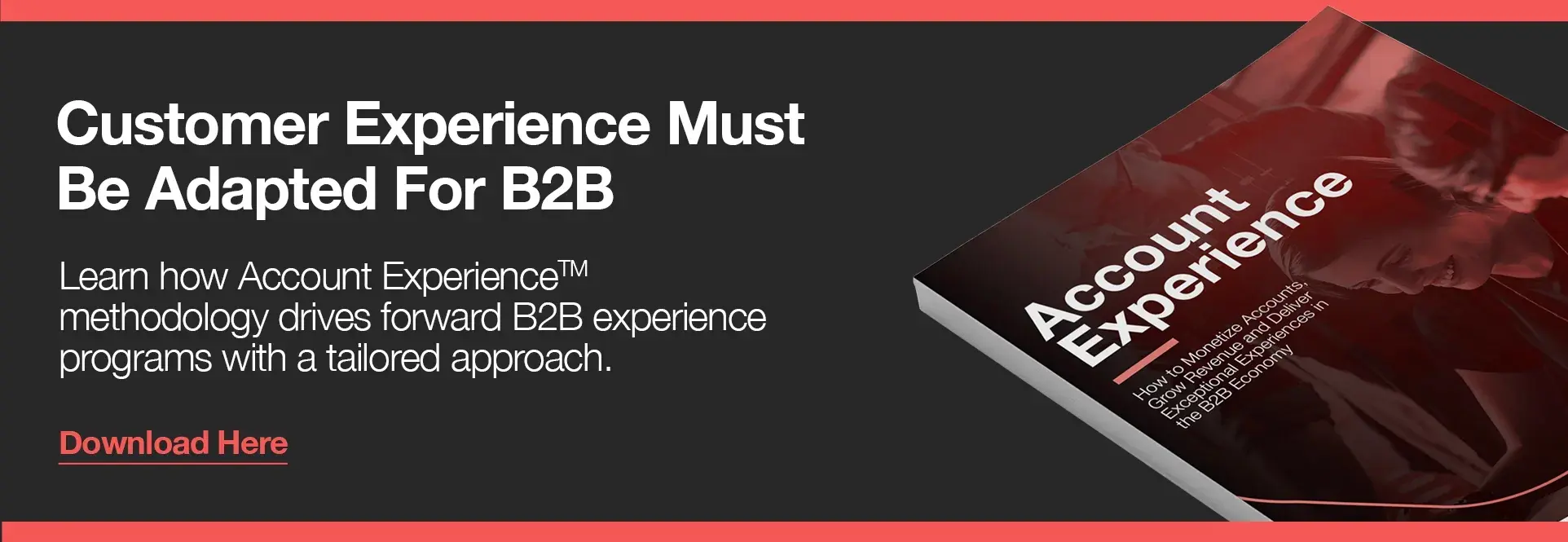All companies have processes in place surrounding products and services by which to create the customer experience (CX).
These processes are a road map for employees to follow to recreate a certain level of experience for every customer.
Customer experience processes though should not be maps providing one route only that must be followed at all costs, instead, they should provide multiple routes and allow employees to make their new routes.
Creating retention-winning customer experience means having flexible customer experience processes.

In the land of the blind, the one-eyed man is king
Employees follow customer experience processes because they are told to do so.
Regardless of whether they agree with the process or not, employees in many companies are forced to walk blindly the same path each time regardless of the effect on customer experience.
However, giving employees the flexibility to adapt to “on-the-ground” situations creates a customer experience that is truly responsive to customer needs and will make these companies leaders in the world of customer experience.
To create a flexible customer experience, decision-making needs to be given back to frontline employees. Employees should not have to continually refer to a manager or flatly deny all requests that fall outside of the customer experience process.
Much of what customers ask for is not unreasonable.
Being able then to deviate from the process to satisfy customer needs, allows companies to maintain the level of customer experience that the process was first put in place to create.
The curious case of the Ritz-Carlton
Way back before Customer Experience was even spelled with capitals, the president of the Ritz-Carlton, Horst Schulze, realized something: to create a brand that was the epitome of luxury and service, his frontline employees needed the autonomy and capacity to meet any customer problem.
Schulze knew that customers expecting the best didn’t want to hear, “I'll check with management.”
So, Schulze decided that each staff member was to be given a $2,000 discretionary fund per guest, which was to be used to solve any customer complaint in a manner entirely decided upon by the employee.
This forward-thinking practice still continues today at the Ritz and why it works is so simple, it’s genius.
By allowing the employees the autonomy to make decisions for themselves and arming them with the capacity to meet customer needs, i.e. money, employees and customers view each other from the start in a far more amicable manner.
Ritz-Carlton staff are given decision-making freedom to create an amazing customer experience.
Why is this so? Employees who are not able to be flexible within a customer experience process are naturally inclined to begin a customer interaction on the defensive. So, being met with such stern opposition to what they feel is a reasonable request, customers tend to increase their demands, and around and around we go.
Conversely, employees who know they have been given the ability to decide upon each situation themselves means starting interactions open, flexible, and giving. Creating in return customers that feel inclined to be reasonable.
In these types of flexible interactions whether an employee fulfills a customer’s request has far less impact on the overall experience for the customer than in situations where the employee is uncompromising.
The employee’s choice of action results not from mindlessly repeating company policy but from a reasoned and fair discussion where the customer actually feels heard.
What we learn from being flexible
Customer experience processes are needed to create standards for all employees to work towards, but such processes are simply a base to improve upon.
However, improving and changing such processes is often done long after many customers have had to suffer. Customers know what is needed long before the company does.
Allowing frontline employees to be flexible means learning about what customer expectations are not being met.
While flatly denying any request that deviates from the process means companies don’t learn how the experience for the customer has transformed with time.
Nothing is stagnant, and what was needed yesterday is no longer relevant today.
Being flexible means learning directly from the customer what needs changing or improving, how this can be best carried out, and reintegrating these new ideas back into the customer experience process.
In an age where customers who feel their needs are not met will quickly tweet up a storm or make hilarious but viral damaging YouTube videos, not allowing a flexible customer experience is surely playing with fire.

